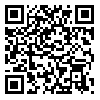BibTeX | RIS | EndNote | Medlars | ProCite | Reference Manager | RefWorks
Send citation to:
URL: http://ioh.iums.ac.ir/article-1-1934-en.html
Background and aims: Thousands of people die in road crashes each year and several hundred thousand are disabled, as a result of road traffic accidents. Counts of fatal accidents were caused by drivers who are not comply with their jobs. Studies indicated that small percentage of people are more likely to have accidents in a similar situation, whom named as accident-prone drivers. This study aims to determine the effects of personality and demographic characteristics on accident proneness of Iranian bus drivers.
Methods: This cross-sectional study conducted in the winter of 2016, in order to identify the relationship between driver’s personality and demographic characteristics with accident proneness. To obtain demographic and personality characteristics, NEO questionnaires was used. All samples were selected through drivers of a transportation company with similar work schedule. In order to control environmental parameters all sample were collected during certain hours of the day with similar traffic and weather conditions, during 20 days. To investigate the relationship between parameters, spearman as a non-parametric statistical tests was used by SPSS version 19.
Results: Statistical analysis result indicated that in terms of personality neuroticism, extraversion, desire for new experiences, agreeableness, 72%, 33%, 69%, 41% and 100% of drivers were placed between 12-24, respectively, and 27%, 66%, 30%, 58% of them were categorized in the intermediate range 24 to 48. Results indicated significant correlation between the number of driver’s errors and each of the five measured personality inventory (P <0.05).
Conclusion: The number of driver’s errors and NEO questionnaire score correlation indicated that use of this questionnaire provide a great opportunity to identify accident-prone drivers, especially when historical data is not available.
Received: 2016/10/7 | Accepted: 2017/09/6 | Published: 2018/01/7
| Rights and permissions | |
 |
This work is licensed under a Creative Commons Attribution-NonCommercial 4.0 International License. |





